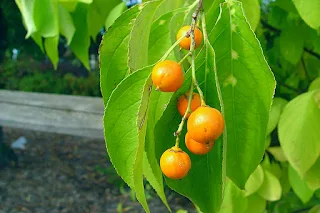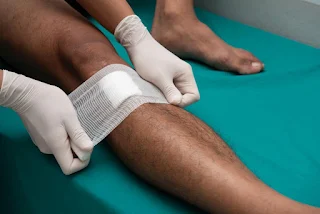Malkangani, also known as “Staff tree” or ‘Tree of Life’, is a large woody climbing shrub.Its oil is beneficial for hair and is used as a hair tonic. The application of Malkangani on the scalp makes hair healthy and helps reduce dandruff due to its antifungal property. Malkangani is also used for managing dermal problems such as eczema. Malkangani leaves have strong wound healing activity and help reduce pain and inflammation due to its antimicrobial and anti-inflammatory properties.According to Ayurveda, Malkangani powder can be taken along with honey or water to help manage pain and swelling due to osteoarthritis due to its vata balancing property.
Consuming Malkangani oil with lukewarm water once a day helps in enhancing memory due to its Medhya (improves intelligence) property
Malkangni is one of the few Ayurvedic herbs that enhance memory and intelligence, nourishes brain cells, and helps in combating depression. Due to their vast therapeutic benefits, medicinal herbs are recommended in the treatment of many mental and neurological disorders. According to the Ayurvedic system, it is effective in treating the weakness of the nervous system, loss of nerves, and paralysis.
Male Sexual Dysfunction
Malkangani is an excellent aphrodisiac.
It increases libido in men and improves stamina. It also helps in the treatment of sexual dysfunction, early discharge, and premature ejaculation.
Sexual dysfunction in men can be in the form of loss of libido i.e., having no inclination towards a sexual act. There can also be a low erection time or semen expelled soon after sexual activity. This is also referred to as ‘early discharge or premature ejaculation. Taking Malkangani helps to correct male sexual dysfunction and also improves stamina. This is due to its Vajikarana (aphrodisiac) property.
Tips:
a. Take 2-5 drops of Malkangani oil.
b. Add it to lukewarm milk or water.
c. Have it once a day after taking light food to maintain sexual wellness.
Sexual dysfunction in men can be in the form of loss of libido i.e., having no inclination towards a sexual act. There can also be a low erection time or semen expelled soon after sexual activity. This is also referred to as ‘early discharge or premature ejaculation. Taking Malkangani helps to correct male sexual dysfunction and also improves stamina. This is due to its Vajikarana (aphrodisiac) property.
Tips:
a. Take 2-5 drops of Malkangani oil.
b. Add it to lukewarm milk or water.
c. Have it once a day after taking light food to maintain sexual wellness.
Osteoarthritis
Malkangani is useful to manage pain in osteoarthritis. According to Ayurveda, osteoarthritis occurs due to an aggravation of Vata dosha and is known as Sandhivata. It causes pain, swelling, and difficulty in movement. Malkangani has Vata balancing property and gives relief from the symptoms of osteoarthritis like pain and swelling in the joints. Tips:
a. Take 4-6 pinch of Malkangani powder.
b. Mix with honey or water.
c. Have it after lunch and dinner in managing the symptoms of osteoarthritis.
RECOMMENDED DOSAGE OF MALKANGANI
Malkangani Powder - 4-6 pinch once or twice a day.
Malkangani Capsule - 1-2 capsules once a day.
Malkangani Oil - 2-5 drops once a day.
Protects bone health
Malkangani is loaded with anti-inflammatory and antinociceptive properties that are beneficial for protecting bone health. It reduces joint inflammation and joint pain in the case of osteoarthritis.
Weak memory
Malkangani helps to enhance memory. According to Ayurveda, poor memory is due to inactivity of Kapha or aggravation of Vata dosha. Malkangani helps in balancing Vata and improves memory. This is due to its Medhya (improves intelligence) property.
Tips:
a. Take 2-5 drops of Malkangani oil.
b. Add it to lukewarm milk or water.
c. Have it once a day after taking light food to manage a weak memory.
Due to its anti-stress and calming effect, Malkangani is very useful for the treatment of insomnia. It calms the body and induces sleep. It is also useful to manage the symptoms of anxiety.
Anxiety
Malkangani is useful to manage the symptoms of anxiety. According to Ayurveda, Vata governs all the movement and actions of the body and nervous system respectively. Anxiety is mainly due to Vata imbalance. Malkangani helps to reduce the symptoms of anxiety. This is due to its Vata balancing and a unique Medhya (improve intelligence) properties.
Tips:
a. Take 4-6 pinch of Malkangani powder.
b. Mix with honey or water.
c. Have it after lunch and dinner to control the symptoms of anxiety.
HOW TO USE MALKANGANI
1. Malkangani Seed Powder
a. Take 4-6 pinch of Malkangani powder.
b. Mix with honey or water.
c. Have it after lunch and dinner.
d. Repeat this daily to control the symptoms of anxiety.
2. Malkangani (Jyotishmati) Capsules
a. Take 1-2 Jyotishmati capsules.
b. Swallow it with water once a day.
3. Malkangani (Jyotishmati) Oil
a. Take 2-5 drops of Malkangani (Jyotishmati) oil.
b. Add it to lukewarm milk or water.
c. Drink preferably in the morning after taking light food for better results.
a. Take 4-6 pinch of Malkangani powder.
b. Mix with honey or water.
c. Have it after lunch and dinner.
d. Repeat this daily to control the symptoms of anxiety.
2. Malkangani (Jyotishmati) Capsules
a. Take 1-2 Jyotishmati capsules.
b. Swallow it with water once a day.
3. Malkangani (Jyotishmati) Oil
a. Take 2-5 drops of Malkangani (Jyotishmati) oil.
b. Add it to lukewarm milk or water.
c. Drink preferably in the morning after taking light food for better results.
Joint Pain
Malkangani oil helps to manage bone and joint pain when applied to the affected area. According to Ayurveda, the bones and joints are considered a site of Vata in the body. Pain in the joints is mainly due to Vata imbalance. Applying Malkangani oil helps to reduce joint pain due to its Vata balancing property.
Tips:
a. Take 2-5 drops of Malkangani (Jyotishmati) oil or as per your requirement.
b. Mix with coconut or olive oil.
c. Apply or massage on the affected area.
d. Repeat to get relief from the symptoms of arthritis.
Hair loss
Malkangani is also one of the most useful Ayurvedic herbs that are used for hair related problems. According to Ayurveda, the reason for hair fall is an aggravated Vata dosha. Using Malkangani oil helps in balancing Vata and remove excessive dryness from the scalp.
Tips:
a. Take 2-5 drops of Malkangani (Jyotishmati) oil or as per your requirement.
b. Mix with coconut oil or olive oil.
c. Massage well on the scalp.
d. Repeat this twice a week to control hair fall.
Malkangani for fatty liver
Malkangani is one of the best Ayurvedic herbs for treating patients suffering from the fatty liver syndrome. It also significantly lowers the elevated cholesterol and LDL cholesterol and prevents cardiac diseases.
Skin disease
Malkangani powder or oil helps to control the symptoms of skin disease like eczema when applied on the affected area. Some of the symptoms of eczema are rough skin, blisters, inflammation, itchiness, and bleeding. Applying Malkangani or its oil reduces inflammation and helps to stop bleeding. This is because of its Ropan (healing) property.
Tips:
a. Take 2-5 drops of Malkangani (Jyotishmati) oil or as per your requirement.
b. Mix with coconut oil or olive oil.
c. Apply or massage on the affected area.
d. Repeat this to manage various skin diseases.
Asthma
Malkangani oil helps to reduce the symptoms of asthma. According to Ayurveda, the main doshas involved in asthma are Vata and Kapha. The vitiated ‘Vata’ combines with deranged ‘Kapha dosha’ in the lungs causing obstruction in the respiratory passage. This results in difficulty in breathing. This condition is known as Swas Roga or Asthma. Applying Malkangani oil daily before going to bed on the chest helps to calm Kapha and loosen the accumulated mucus in the lungs. This gives relief from the symptoms of asthma.
Tips:
a. Take 2-5 drops of Malkangani (Jyotishmati) oil or as per your requirement.
b. Mix with olive oil
c. Apply or massage on the affected area.
d. Repeat to get relief from the symptoms of asthma.
RECOMMENDED DOSAGE OF MALKANGANI
Malkangani Oil - 2-5 drops or as per your requirement.
HOW TO USE MALKANGANI
1. Malkangani (Jyotishmati) Oil
a. Take 2-5 drops of Malkangani (Jyotishmati) oil or as per your requirement.
b. Mix with coconut oil or olive oil.
c. Apply or massage on the affected area.
2. Malkangani Seeds
a. Take ½-1 teaspoons of Malkangani seeds and grind to make powder.
b. Mix with water or honey and make a paste.
c. Apply on the affected area once a day.
d. Use this remedy once a day to manage wounds and ulcers.
****************
Ear ringing buzzing tinnitus natural and homeopathic remedies
Homeopathic Remedies for Depression
Homeopathic remedies to dissolve kidney stones.
How to deal with Clogged or blocked arteries
Coconut Will Give You These Amazing Health Benefits
Health Benefits Of Vasaka (Malabar Nut), Uses And Its Side Effects
How to get rid of chest pain at home
Benefits and uses of Malkangni (Jyotishmati)
Benefits and uses of thuhar(Euphorbia neriifolia) plant
Home Remedies for Enlarged Prostate
Ayurvedic Herbs For Muscle Growth and body building
Benefits of Fennel seeds (saunf)
Health Benefits of Bitter Gourd (Karela)
Leucoderma Vitiligo Treatment By Homeopathic and home remedies
Health benefits of cucumber(kheera)
Natural Homeopathic Remedies for High and low blood Pressure
Foods that unclog(clear) arteries naturally
Benefits of ayurvedic herb Mulethi
Benefits of Kalmegh (Andrographis Paniculata)
Health Benefits of Turmeric and Curcumin
Amazing benefits of tulsi leaves
Health benefits of herb Isabgol
Benefits of ayurvedic medicine Cinnamon(Dalchini)
Benefits of ayurvedic medicine Shilajit
Homeopathic Remedies for Depression
Homeopathic remedies to dissolve kidney stones.
How to deal with Clogged or blocked arteries
Coconut Will Give You These Amazing Health Benefits
Health Benefits Of Vasaka (Malabar Nut), Uses And Its Side Effects
How to get rid of chest pain at home
Benefits and uses of Malkangni (Jyotishmati)
Benefits and uses of thuhar(Euphorbia neriifolia) plant
Home Remedies for Enlarged Prostate
Ayurvedic Herbs For Muscle Growth and body building
Benefits of Fennel seeds (saunf)
Health Benefits of Bitter Gourd (Karela)
Leucoderma Vitiligo Treatment By Homeopathic and home remedies
Health benefits of cucumber(kheera)
Natural Homeopathic Remedies for High and low blood Pressure
Foods that unclog(clear) arteries naturally
Benefits of ayurvedic herb Mulethi
Benefits of Kalmegh (Andrographis Paniculata)
Health Benefits of Turmeric and Curcumin
Amazing benefits of tulsi leaves
Health benefits of herb Isabgol
Benefits of ayurvedic medicine Cinnamon(Dalchini)
Benefits of ayurvedic medicine Shilajit

.png)







